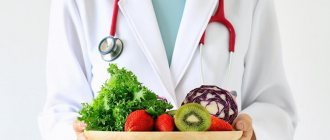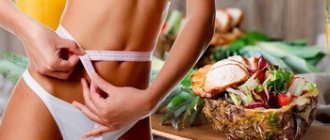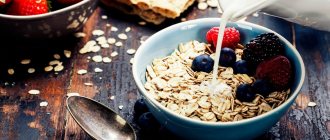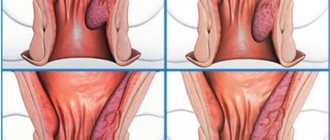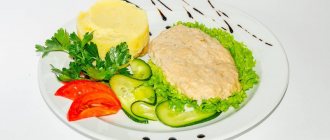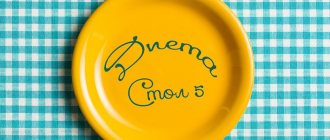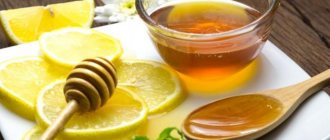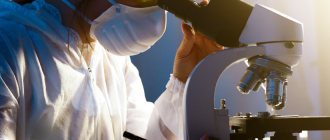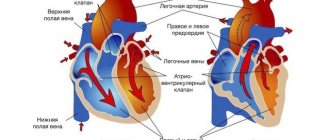“Space diet” by Sergei Sivokho: without denying himself anything, the comedian lost 42 kg in 3 months
The famous professor, nutritionist and therapist M.I. Pevzner developed diet table 11, which has therapeutic and prophylactic properties and is aimed at strengthening the body after anemia, tuberculosis, helps increase hemoglobin, and is indicated during pregnancy. Next, we will consider in detail the menu for the week for diet table 11.
General characteristics of dietary table No. 11
Diet No. 11 fully satisfies a person’s physiological needs for nutrients and energy with a moderate restriction of salt intake and easily digestible carbohydrates. Mechanical and chemical irritants of the stomach and biliary system are also limited. The calorie content of the diet is moderately increased, and increased consumption of animal proteins and plant dietary fiber is provided. With iron deficiency anemia, the proportion of proteins is increased, and the proportion of fats is slightly reduced. With exacerbation of tuberculosis in the diet, increase the content of vitamin C and the proportion of fresh vegetables and fruits. In case of exudative phenomena, exclude salt and limit liquid to 1 liter per day. Food is prepared steamed, boiled, stewed, baked, and wiped if necessary. It is necessary to include foods rich in vitamins and calcium salts in the diet. Much attention is paid to stimulating the patient's appetite, including serving dishes. Diet No. 11 provides for fractional meals 6 times a day.
Therapeutic nutrition for tuberculosis
A patient with tuberculosis needs a diet that should contain basic foods that contain not only the optimal amount of proteins, fats and carbohydrates, but also a sufficient amount of vitamins and mineral salts. What is important is not so much the quantity of food and high calorie content, but rather its quality composition.
The main thing in the treatment of newly diagnosed pulmonary tuberculosis or its exacerbation (relapse) is intensive regimens of taking 4-5 anti-tuberculosis drugs simultaneously for several months. Naturally, with such chemotherapy, side effects from the drugs can be expected. The final elimination of infection, resorption or delimitation of foci of tuberculosis of the lungs remain the task of the body itself.
This implies the need to strengthen the body’s defenses and overcome the side effects of anti-tuberculosis drugs, including through targeted nutrition.
General principles of diet therapy for tuberculosis:
- provide the body with adequate nutrition in conditions of protein breakdown, deterioration of fat and carbohydrate metabolism, increased consumption of vitamins and minerals against the background of a frequent sharp decrease in appetite;
- increase the body's defenses against infection and reduce intoxication;
- contribute to the normalization of impaired metabolism and eliminate secondary nutritional disorders of the body caused by the tuberculosis process;
- promote the restoration of tissues affected by tuberculosis infection.
The energy value of the diet depends on the characteristics of the course of tuberculosis, concomitant diseases, the patient’s body weight, as well as the nature of work with preserved ability to work. In case of an acute course or a sharp exacerbation of the disease and bed rest, 2200-2400 kcal per day is enough, with semi-bed rest more - 2500-2700 kcal, with attenuation of the acute process or exacerbation 2800-3100 kcal, or 40-45 kcal per 1 kg of body weight.
For patients with chronic pulmonary tuberculosis, especially young people, as well as those with exhaustion, a diet is required whose energy value is 15-20% higher than physiological norms. A higher energy value of the diet is not beneficial. Rapid and large weight gain can worsen the patient's condition. A misconception is the idea that patients with tuberculosis need extra-strengthened nutrition, which leads to overfeeding and overload of the digestive organs.
The diet should have an increased protein content, on average 90-100 g (1.3-1.4 g per 1 kg of normal body weight), and in case of exhaustion, sluggish course of the disease, tissue breakdown, attenuation of exacerbation 1.5-1.7 g of protein per 1 kg of normal body weight, on average 110-120 g, of which at least 55-60% comes from animal products. A high protein content is necessary to replenish its increased consumption, restore tissue at the site of infection, and strengthen the body's defenses. In severe cases of the disease with high fever and severe intoxication, the amount of protein in the diet is limited to 70-80 g, of which 65% comes from protein from animal products.
Taking into account the patient’s tastes, protein sources can be various types of meat, poultry and fish, excluding very fatty ones. It is advisable to use liver dishes. In case of chronic pulmonary tuberculosis, any culinary processing of these products is acceptable. In the absence of contraindications (for example, with pleurisy with effusion), the diet includes meat and fish products - sausages, ham, herring, balyki, caviar, canned food (sprats, sardines, salmon in their own juice, etc.). The diet should include eggs and various dishes made from them.
The full range uses dairy products with the obligatory inclusion of cottage cheese and cheese, as well as fermented milk drinks, including those enriched with probiotics and prebiotics (kefirs, yoghurts, etc.). Taking probiotics not only normalizes the intestinal microflora, but also improves the course of tuberculosis. On the other hand, courses of kumiss therapy against the backdrop of resort climatotherapy have proven themselves well in the treatment of pulmonary tuberculosis.
If the patient wishes and there are no strict contraindications, alcoholic drinks can be used in small quantities (in terms of ethyl alcohol - up to 30 ml for men and 15-20 ml for women), especially grape wines, especially in order to improve appetite when it is often severely suppressed , which leads to a reduction in food consumption. In the past, enotherapy (“wine therapy” using natural grape wines) was used in the treatment of pulmonary tuberculosis.
The fat content in the diet should not exceed 100-110 g, and in case of exacerbation of the disease, 70-80 g. The main sources of dietary fat are butter and vegetable oils in their natural form, as well as soft (bulk) margarines. You should not overload your diet with fats, as this worsens the appetite reduced due to tuberculosis, upsets digestion, and products of incomplete oxidation of fats accumulate in the blood. The use of lard from badgers, marmots or bears is an old folk remedy for treating tuberculosis, but the special therapeutic effect of these fats has not been scientifically confirmed.
Carbohydrates replenish the energy value required for a particular patient, but on average their consumption should be within physiological norms: 350-400 g per day, of which 80-100 g come from sugar, honey, jam and other sugary products. Outside the acute period of illness, the diet includes various flour products (pies and pies baked with meat or fish, biscuits, baked goods, etc.), any dishes from various cereals (especially buckwheat and oatmeal), in particular, in combination with cottage cheese, pasta , well-cooked legumes. The necessary carbohydrate part of the diet is vegetables, fruits and berries in any culinary processing, but with the obligatory inclusion of raw ones. Chronic pulmonary tuberculosis not in the acute phase is included in the number of diseases for which ampelometry is used - treatment with grapes.
Particular attention in case of tuberculosis requires providing the body with vitamins, primarily B1 (thiamine), B6 (pyridoxine) and C (ascorbic acid). This is explained by the fact that during chemotherapy, the local formation of a number of vitamins by the microflora of the large intestine and the absorption of vitamins in the intestine are inhibited, as well as direct antagonism between anti-tuberculosis drugs and vitamin B6, between antibiotics and vitamin B1. Although the clinical picture of vitamin deficiency is rare, hidden vitamin deficiency contributes to the toxic effects of chemotherapy on the nervous system, liver, heart, skin and mucous membranes.
The standard of treatment for patients with pulmonary tuberculosis provides for the prescription of supplementing the diet with vitamin-mineral complexes.
The diet should provide a sufficient supply of minerals, especially calcium, phosphorus and iron. Table salt is usually not limited, but sometimes its amount is increased to 20 g per day (with profuse sweating, diarrhea, vomiting) or limited down to salt-free food (with fluid retention in the body). The amount of free liquid in the diet changes accordingly: from the usual 1.5 l to an increase (2-2.5 l) or restriction (0.8-1 l).
With uncomplicated tuberculosis, food processing is usual, eating 5-6 times a day. It is necessary to diversify the diet as much as possible and eliminate the frequent repetition of dishes on the menu. These requirements are mainly met by the considered approaches to nutrition, which are applicable for pulmonary tuberculosis during the period of mild exacerbation or its attenuation, for osteoarticular tuberculosis, and for tuberculosis of the lymph nodes.
In hospital settings for tuberculosis, a high-protein diet 11(t) is used.
Chemical composition and energy value of dietary table No. 11
Proteins: 110–120 g (50 g animal proteins). Fats: 80–90 g (at least 30 g of vegetable fats). Carbohydrates: 250–350 g. Daily calorie content: 2,200–2,700 kcal. Free liquid: 1.5–2 l. Table salt: 6–8 g Vitamins: retinol (A) – 1 mg, thiamine (B1) – 2 mg, riboflavin (B2) – 4 mg, nicotinic acid (B3) – 30 mg, ascorbic acid (C) – 200 mg. Macroelements: sodium – 4 g, calcium – 1.4 g, magnesium – 0.6 g, phosphorus – 2.2 g. Optimal food temperature: from 15 to 60 degrees Celsius.
Advantages
After following the diet plan, patients experience a number of positive changes:
- gaining missing weight;
- strengthening the immune system;
- normalization of sleep;
- elimination of headaches and weakness;
- improved blood and urine test results;
- increasing efficiency and vitality.
Such nutrition can hardly be called a diet in the general sense of the word. After all, the patient is allowed almost all gastronomic pleasures, with the exception of those that are too fatty and spicy.
Recommended products and dishes of the diet table No. 11
Bread: wheat (including salt-free), rye, with bran, various flour products. Soups: any. Meat dishes: any (except for very fatty) types of meat and poultry, offal, boiled, baked, fried, stewed - in pieces, chopped. Fish dishes: low-fat fish, boiled in pieces, chopped, baked. Various seafood products are recommended. Side dishes: cereals, a variety of pasta, vegetables, legumes - in any form. Dairy products: milk, dairy and fermented milk products, cottage cheese and dishes made from it, cheeses. Eggs: in the form of a steamed egg white omelet. Snacks: aspic, sausages, ham, salads from fresh and boiled vegetables, fish snacks (herring, balyk, caviar, canned fish), cheeses. Sauces: vegetable, milk, sour cream, fruit. Adding spices and seasonings is allowed. It is recommended to exclude very hot and fatty sauces. Sweet dishes: fruit desserts, salads, fresh fruits and berries, honey, sugar, jam, dried fruits, meringues. Drinks: any; Rosehip decoction and fresh juices are recommended. Fats: fresh vegetable oil, fresh unsalted butter.
CLINICAL CASE STUDY
Patient N., 38 years old, employee
9th December
The patient was hospitalized in the therapeutic department with complaints of cough with mucous sputum, weakness, shortness of breath on exercise, general weakness, sweating and loss of appetite, increased body temperature to 39.0–39.5 °C.
Medical history
He considers himself sick since the beginning of November, when the cough persisted for a long time after suffering from acute respiratory viral infection. She was treated independently with home remedies, amoxicillin, bromhexine, Coldrex with variable effect. The body temperature began to rise again.
Objective examination data
Moderate condition. Height - 168 cm, weight - 65 kg. The body is correct. The constitution is normosthenic. Subcutaneous fatty tissue is developed normally and evenly distributed. The skin is clean, pale, with normal moisture. Visible mucous membranes are moist and of normal color. There is no swelling. Lymph nodes are not enlarged. The thyroid gland is not enlarged. Breathing through the nose is free and rhythmic. NPV - 20 per minute. Chest breathing type. The shape of the chest is regular, cylindrical, symmetrical. During auscultation of the lungs, breathing is carried out in all parts, evenly weakened, small bubbles of moist scattered rales are heard, in a small amount. Percussion: dullness of percussion sound in the lower parts of the lungs on both sides.
Heart sounds are muffled, the rhythm is correct. Percussion: the boundaries of the heart are not expanded. Heart rate - 90 per minute. Blood pressure 130/80 mm Hg. Art.
Tongue is wet. The abdomen is soft, painless on palpation. The liver is at the edge of the costal arch, the spleen is not enlarged. Physiological functions are normal.
Data from laboratory and instrumental research methods
In the general blood test: leukocytes - 12.9; ESR - 30 mm/h.
Biochemical blood test: CRP - 18. Other indicators are within normal limits.
R-graphy of the chest organs shows a picture of bilateral polysegmental pneumonia.
Conclusion: bilateral polysegmental pneumonia.
Drug treatment
The patient was prescribed antibacterial and bronchodilator therapy.
Diet therapy
An individual diet was prescribed.
For the first four days, the 1st and 2nd rations of the alkalizing diet were prescribed.
Sample menu for diet 1:
Breakfast: tea with milk and sugar (200.0); boiled rice with vegetables (190).
11 o'clock: carrot juice (100.0).
Lunch: pureed vegetable soup with meat and sour cream (435.0/10.0).
16 hours: coffee with milk (200.0), bran cookies (30.0).
Dinner: fresh vegetable salad with sour cream (150.0); weak broth with egg flakes (100.0).
At night: rosehip decoction with sugar (200.0).
The second diet adds 50 g of white salt-free bread and 25 g of butter.
The first and second treatment diets contain 24 g of dry protein composite mixture daily.
12 December
Against the background of the therapy, the patient’s condition showed positive dynamics. Relatively satisfactory. Sputum comes out well. Body temperature 37.2 °C. Weakness has decreased. Sweating continues. The auscultatory picture is the same.
Diet therapy
Nutrition is carried out according to the third and fourth rations.
Sample menu for the third diet:
Breakfast: tea with sugar and apple (200.0); baked potatoes (100.0); sour cream (30.0); steam omelette (60.0).
11 hours: salt-free bread (25.0); oil (10.0); berry juice (200.0).
Lunch: pureed vegetable soup with rice (500.0); steamed meat cutlets (100.0); stewed carrots (120.0); blackcurrant compote (200.0).
16 hours: baked apple (100.0).
Dinner: cabbage cutlets with sour cream (190), boiled egg (1 pc.).
At night: rosehip decoction with sugar (200.0).
The third treatment diet includes 24 g of dry protein composite mixture daily.
Sample diet menu No. 11
First breakfast: omelet with meat, curd mousse with dried fruits, coffee. Second breakfast: milk buckwheat porridge, tea. Lunch: seafood salad, meat borscht, chop with mashed potatoes, apple mousse, juice. Afternoon snack: sweet bun, rosehip infusion. Dinner: potato casserole with mushrooms, compote.
Sources:
- Order of the Ministry of Health of the Russian Federation No. 330 “On measures to improve clinical nutrition in medical institutions of the Russian Federation” dated 05.08.2003
Diet Basics
Diet 11 table is a specially developed system of therapeutic nutrition. It is one component of a complex of fifteen diets founded by the Soviet professor M.I. Pevzner. Each numbered dietary table is aimed at treating a specific disease.
The eleventh therapeutic diet helps a weakened body cope with the consequences of infectious diseases and restore strength for full life. This diet is prescribed for the following diseases:
- tuberculosis;
- anemia;
- pneumonia;
- general exhaustion after operations and injuries.
Also, many doctors recommend that pregnant women follow this diet. Because nutritious and high-calorie nutrition ensures the harmonious development of the fetus and reduces the risk of anemia in the expectant mother.
Basic principles of the “Table No. 11” diet
In addition to permitted foods, it is recommended to adhere to the following nutritional principles:
- reduce the amount of sugar , use honey and maple syrup instead;
- reduce the amount of salt , replace it with spicy herbs and spices;
- Divide the entire daily diet into 5-6 servings ;
- although any food processing is allowed, preference should be given to steamed , boiled and stewed dishes ;
- The temperature of the food when serving is recommended to be medium;
- Fasting and calorie reduction are prohibited ; a food diary is kept for control;
- the bulk of carbohydrate foods are consumed in the first half of the day ;
- protein dishes are served for dinner;
- breakfast and lunch must include fruit;
- lemon juice, vegetable oil, sour cream are used as salad dressings
- It is advisable to eat a portion of soup ;
- Alcohol and nicotine are completely ; these harmful substances reduce the effectiveness of treatment to zero.
Addiction to nicotine against the background of pulmonary tuberculosis significantly shortens the patient’s life. If you have pneumonia, smoking can cause a more serious illness.
Recipes
Based on the menu for the week, you can prepare the following dishes:
Carrot, beet and walnut salad
- One carrot
- Half a large beet
- Handful of walnuts
- Sour cream
Boil the beets and grate them. We also grate the carrots. Chop the walnuts, put all the ingredients in a salad bowl and season with sour cream.
Cod fish soup
- Cod (one fish)
- One and a half liters of water
- Two bulbs
- Four potatoes
- One carrot
- Greenery
- 40 ml cream
We clean the fish, separate the head and fins, cut into portions and place in a pan. Cut the potatoes into cubes. We also finely chop the onion and grate the carrots. Place the pan with the fish on the stove, bring to a boil and cook for half an hour over medium heat. When the fish is ready, you need to take it out, cool it, separate it from the bones, chop it and put it back into the broth. We also send potatoes, fried vegetables, chopped herbs and cream there. Cook for another 15 minutes until the potatoes are ready, turn off the heat and let the fish soup brew.
Fruit salad with yogurt
We chop any permitted fruits and season them with natural yogurt. If desired, you can decorate with powdered sugar.
